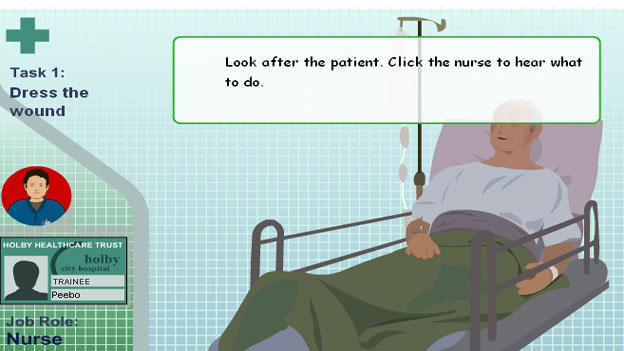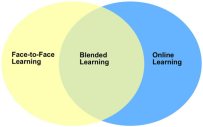Lesson planning is a structured process from which the educator creates a guide to follow for a class. A standard lesson plan contains eight components, I will discuss the top five and supporting evidence that I will use in the classroom.
I chose an article by Weimer (2014) to exemplify the lesson planning component: creating a positive learning experience. I selected this article based on the statement “It’s a responsibility shared by teachers and students” (Weimer, para 2) in reference to the classroom environment. Both faculty and students were asked to, individually, document five or six items that each, respectively does to create a difficult learning environment. I want to do this with my students as it elevates the level of transparency in the classroom.
Next I chose an article by Weimer (2013) focusing on higher order questions and Bloom’s taxonomy. The higher order problems were preferred by teachers as they tested consequences and required analysis beyond a rote questions. I chose this article as the final nursing exam, the NCLEX is all multiple choice and although, higher order questions can be tested, the ability to test critical thinking in another format is completely lost.
Shank (2013) discusses the design and delivery of courses based on characteristics of adult learners. I was drawn to this article as my students bring a wealth of experience and knowledge to the classroom therefore, course content provides avenues for students to share their experiences. I find I plan classes around them to allow for diversity and various learning styles. Shank (2013) advocates individualized learning which I tend to forget as I relate adulthood with total control. The personalization of the content comes to fruition when I meet the students.
Motivational techniques play a role in lesson planning, in particular, with the use of humour. Henderson (2015) states “humour activates our sense of wonder” (para 3). This quote is prevalent as I try to use humour throughout the nursing curriculum. The article indicated, when correctly used, humour increases retention if the instructional humour is topic related.
The final lesson plan component examined is based on critical thinking assessment by Weimer (2015). This is prevalent in my classroom as critical thinking is a mandatory characteristic for a Registered Nurse. Although I will not use the standardized tests mentioned, I appreciate the criteria assessed as it is difficult to objectively judge critical thinking and even harder to define. As part of a lesson plan, I would implement critical thinking characteristics criteria pre- and post-lesson then assess.
As indicated above, only five of the eight components of a lesson plan have been explored. The ideas generated from each article have added to my repertoire of teaching techniques.
Henderson, S. (March 31, 2015).Laughter and learning: Humor boosts retention. Edutopia. Retrieved from http://www.edutopia.org/blog/laughter-learning-humor-boosts-retention-sarah-henderson
Shank, P. (April 2, 2013). More on designing and teaching courses with adult students in mind. Faculty Focus. Retrieved from http://www.facultyfocus.com/articles/online-education/more-on-designing-and-teaching-online-courses-with-adult-students-in-mind/
Weimer, M. (2013). Don’t assume difficult question automatically lead to higher-order thinking. The Teaching Professor, 27(5). Retrieved from http://www.facultyfocus.com/articles/teaching-and-learning/dont-assume-difficult-question-automatically-lead-higher-order-thinking/
Weimer, M. (June 18, 2014). An effective learning environment is a shared responsibility. Faculty Focus. Retrieved from http://www.facultyfocus.com/articles/teaching-professor-blog/effective-learning-environment-shared-responsibility/
Weimer, M. (July 3, 2013). Critical thinking: Definitions and assessments. Faculty Focus. Retrieved from http://www.facultyfocus.com/articles/educational-assessment/critical-thinking-definitions-and-assessments/
 situations. The student may be doing an online newborn physical assessment her baby then the situation changes to an absent heart beat. The student would have to use his/her current knowledge to navigate lab works, tests, doctors orders, and procedures. The overall learning experience builds as the student progresses through the lab. The program taps into students critical thinking and knowledge. Professors monitor the students work and can
situations. The student may be doing an online newborn physical assessment her baby then the situation changes to an absent heart beat. The student would have to use his/her current knowledge to navigate lab works, tests, doctors orders, and procedures. The overall learning experience builds as the student progresses through the lab. The program taps into students critical thinking and knowledge. Professors monitor the students work and can  amend the program based on current teachings. This is a truly revolutionary method of teaching and learning in a skills based program such as nursing.
amend the program based on current teachings. This is a truly revolutionary method of teaching and learning in a skills based program such as nursing.



 (2015), the focus is on gaming as a teaching-learning strategy for students in a community health nursing program. The term ‘digital’ students was given for anyone born after 1983 (para.1). These students find traditional learning environments limiting and need engagement, technology and entertainment. Instead of juvenile, classroom exams, the article emphasizes serious games meant to be used in an informal setting. Serious gaming allows for a meaningful learning experience for the student, in a place that is relevant to them, combining kinetic and tactile learning styles of the digital nurse. The implementation of this program began when instructors noticed nursing students were bored with the standard delivery of instructional material. The premise of the program is based on the first three levels of Bloom’s taxonomy: knowledge, comprehension, and application. The laying of learning for the course was to provide a variety of methods of learning, including gaming. A limitation was, not all students were of the digital generation, and therefore, there was still a place for the traditional classroom. Although, gaming is fun and addresses a particular generations needed, the game must be evidence-based with clear goals and objectives focused on learning for the course.
(2015), the focus is on gaming as a teaching-learning strategy for students in a community health nursing program. The term ‘digital’ students was given for anyone born after 1983 (para.1). These students find traditional learning environments limiting and need engagement, technology and entertainment. Instead of juvenile, classroom exams, the article emphasizes serious games meant to be used in an informal setting. Serious gaming allows for a meaningful learning experience for the student, in a place that is relevant to them, combining kinetic and tactile learning styles of the digital nurse. The implementation of this program began when instructors noticed nursing students were bored with the standard delivery of instructional material. The premise of the program is based on the first three levels of Bloom’s taxonomy: knowledge, comprehension, and application. The laying of learning for the course was to provide a variety of methods of learning, including gaming. A limitation was, not all students were of the digital generation, and therefore, there was still a place for the traditional classroom. Although, gaming is fun and addresses a particular generations needed, the game must be evidence-based with clear goals and objectives focused on learning for the course. the combination of face-to-face learning with online activities, overtly, it appears to be the perfect blend of formal and self-directed education. Bart (2010) indicates blended learning is an alternative to traditional learning, overcrowded classrooms and is cost-effective (para 1). The article does elaborate on the fiscal savings. Bart (2010) explains preparation for the educator increases, in a blended classroom requiring discipline to adhere to the lesson plan. An increased workload yielding cost-savings will undoubtedly not be seen by the instructor but possibly by the institution in overhead.
the combination of face-to-face learning with online activities, overtly, it appears to be the perfect blend of formal and self-directed education. Bart (2010) indicates blended learning is an alternative to traditional learning, overcrowded classrooms and is cost-effective (para 1). The article does elaborate on the fiscal savings. Bart (2010) explains preparation for the educator increases, in a blended classroom requiring discipline to adhere to the lesson plan. An increased workload yielding cost-savings will undoubtedly not be seen by the instructor but possibly by the institution in overhead.